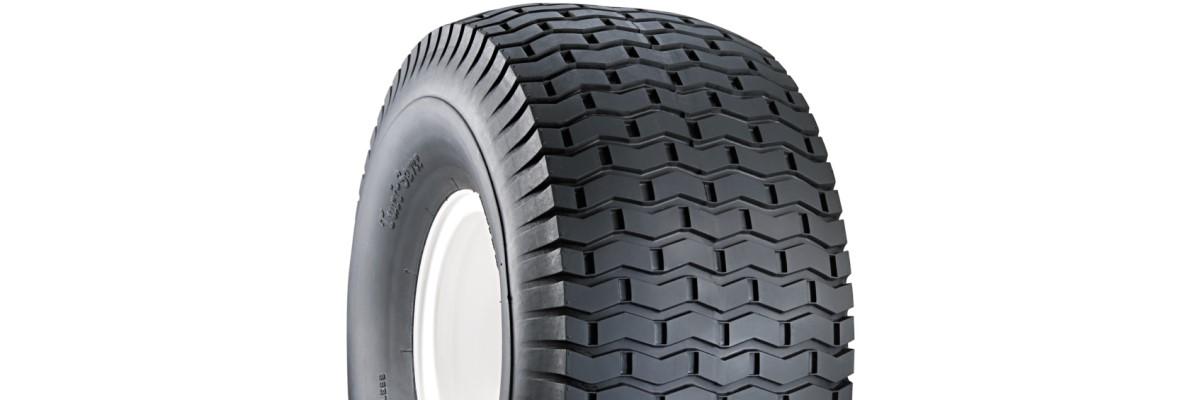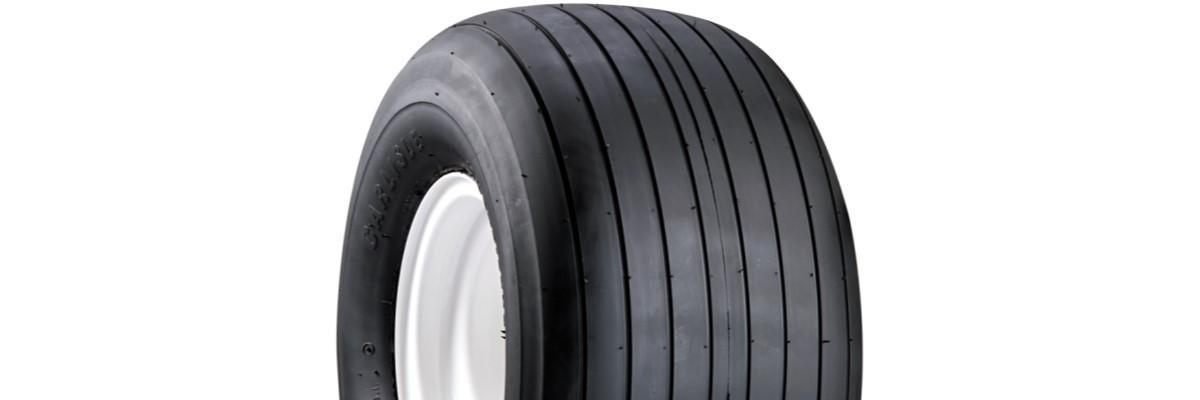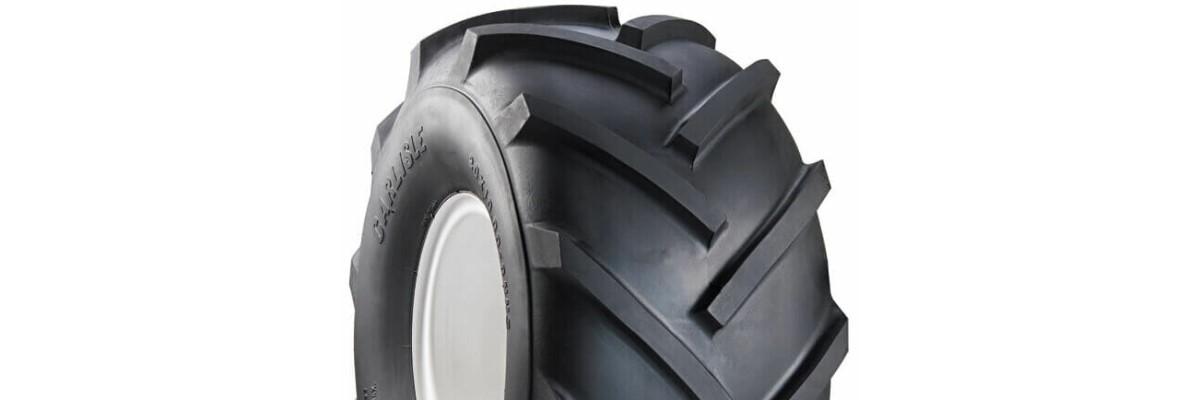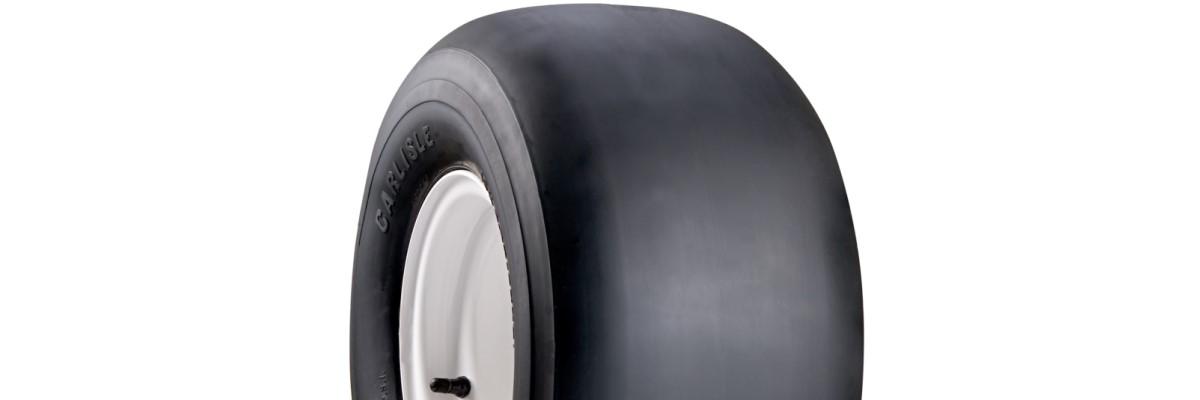

Turf & Ground Care Tyres
Our Turf Tyre & Ground Care section range covers tyres for ride on mowers, golf carts & professional grounds-care machinery. Find leading brands like Carlisle, Trelleborg, Vredestein & BKT, along with value brands like Wanda & Duro. Simply search our catalogue & buy online!
Search our turf & ground care tyre range using our tyre finder below, all you need is your tyre size to start. Ensure you later filter your results to only display tyres that match or exceed your current tyres load and speed rating.
TURF TYRE BRANDS
TURF & LAWN TYRE DETAILS EXPLAINED
Turf Tyre FAQs
There are several methods for writing the size of tyres, with measurements sometimes given in inches, sometimes in millimetres, or sometimes in both! The examples and explanations given below should hopefully make it possible for you to recognise your own size markings as written on the sidewall of your turf tyre
EXAMPLE 1: 15X6.00-6, 18X8.50-8, 24X12.00-12
The first number is the height of the tyre (knows as the outer diameter) in inches. The second part is the width of the tyre (section width) in inches, and the third part is the rim (diamter of the hole in the middle of the tyre) in inches. The '-' before the rim tells us the construction is crossply type (Radial would be represented by an 'R' instead of the '-'). So a 15X6.00-6 turf tyre would be 15 inches tall (15" outer diameter), 6 inches wide (6" section width) and fit a 6" diameter wheel rim.
EXAMPLE 2: 170/60-8, 255/55R12, 315/75-15, 420/85R28
The first part is the width (section width) of the tyre in mm, the second part, is the 'profile' of the tyre (height of the sidewall expressed as a percentage of the width), and the third number is the rim diameter in inches. The 'R' when present within the size, means the tyre is of radial construction, whereas the '-' shows its of crossply construction. So a 170/60-8 is 170mm wide, has a profile of 60% (the tyre side walls are 60% of 170mm = 102mm tall), is of crossply construction and fits an 8 inch rim.
EXAMPLE 3: 3.00-4, 3.50-6, 4.00-8, 5.20-10, 6.00-12
This type has just two numbers. The first number i.e. 3.00, tells you the width of the tyre (called the section width). The '-' means the tyre is crossply (radial construction would be represented by an 'R'). The final number, 4, is the rim diamter in inches. So a 3.00-4 tyre is 3 inches wide, would fit on a 4 inch rim/wheel, and be of crossply construction.
Most turf care tyres may have a Ply Rating on them, such as 2PR, 4PR, 6PR. This ply rating number also represents the weight a tyre will carry (along with the load index) and generally speaking you should not go to a lower ply rating than you currently have. Most of the time you will simply replace your tyre with a tyre of the same ply rating and all will be well (as long as the ply rating you currently have is suitable for the machine!). Going to a slightly higher ply rating is also usually fine, if unsure ask us or check your machines manual.
A tyre's Speed Index is the maximum safe speed a tyre can travel at. It is represented with a letter from the very slow (A1) to the very fast (Y and beyond). For a turf tyre this generally isn't a concern as usually the tyres run at slow speeds, but if your machine is travelling over 10 mph then it is worth checking the speed index is suitable.
The Load Index can be important. It is the maximum weight that the tyre can safely support. This is often represented by a number, the higher this number, the more weight the tyre can carry. It is imperative for the safety of the vehicle and its occupants that tyres with high enough load indexes are chosen. You can see the load index table in our our . The ply rating of your tyre also helps guide you.
Our tyre fitting service is a mobile on-site service where a fitter can be booked to come to you after your tyres have been delivered by our couriers. A call out fee and tyre change fee is charged which can prove expensive for smaller turf tyre sizes. Most customers opt to take the old tyre and wheel rim to a local garage to be swapped over by a professional fitter, and as a guide you should be charged between £5-£15 per tyre. Some customer will opt to fit their own tyre, but please only do so if you are confident you know how to do so safely. Turf tyres when new can appear squashed due to how the tyre manufacturers transport and store their tyres, and sometime a tyre bead blaster or inner tube will be required to seat the tyre correctly on the rim. See our for more details.
Foam filling is a permanent puncture-proofing solution for vehicles operating in hazardous environments or over rough terrain. We offer a range of options for different vehicle types, and can either supply new foam-filled tyre and wheel assemblies or can collect your existing tyres and rims for foam filling.
If you suffer from punctures from thorns and flint then foam filling can help. It can cost as much or more than the tyres themselves, but you will be left with a puncture proof tyre that should last until the tread is worn out, often a cost effective solution. See our for more details.
Storing your Turf Tyres tyres correctly when on the machine or stacked as spares is important in extending their life time and ensuring they remain safe and continue to function as they should. General advice is to keep your turf tyres out of heat and direct sunlight, as it can dry out the rubber and cause cracking.
When leaving a machine unused for a long period try to jack the machine up to take some weight off the tyres to avoid misshaping them. Other advice to follow is to keep them away from liquids like petrol, oil and grease so not to deteriorate the rubber compounds.





